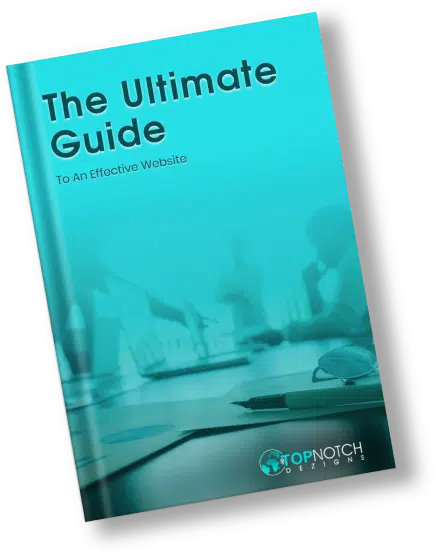You’ve crafted the perfect ad, nailed your keyword targeting, and people are clicking, but what happens next? This is where your landing page takes center stage. You may think of it as the online version of a brick-and-mortar store. It’s where conversions occur; where information about your products or services leads people to take desired actions.
Like in an actual store, it is crucial to build landing pages to engage visitors in a stress-free way, especially because people have high expectations when it comes to the online marketplace. Not surprisingly, the best PPC landing pages make a world of difference. They improve conversion rates, increase return on investment (ROI), and leave a good impression on visitors.
Here, you will learn the importance of a high-performing PPC landing page, and look at the best practices that can help attract your target audience and drive leads to perform desired actions.

Table Of Contents
How Landing Pages for PPC Bridge the Conversion Gap
Imagine clicking on an advertisement promoting a new pair of running shoes, and when you head to the webpage in question, it provides very little information about the shoes or the promotion you were expecting to see. This would be unfortunate, wouldn’t it?
This gap makes landing pages indispensable in the PPC landscape and plays an important role in your overall paid ads strategy. After all, a landing page for PPC is not just another page on your website; it needs to focus on converting visitors into buyers.

What Links PPC Landing Page Optimization and Conversions
Landing pages link an advertisement to the action you want a visitor to perform. When web users click on your advertisement, they tend to have the experience they want afterward in mind already, and landing pages cater to that expectation.
In other words, your ad makes a specific promise, and the landing page is where you keep the promise. For example, if your ad shows a discount for winter boots, your landing page must provide details about winter boots and discount offers. It is essential for an ad copy and landing page to match because this facilitates the conversion process and builds a user’s trust.
However, despite the best efforts to attract visitors, it is possible to ruin the experience by using irrelevant or poorly designed landing pages. In this scenario, users may feel cheated in some way, which might result in a high bounce rate, a low conversion rate, and other negative letdowns.
This disconnect can hamper your PPC ad campaign’s performance significantly, where inefficient ad use and the inability to reach marketing objectives can lead to a budgetary loss.
Providing a Clear and Focused User Experience
Unlike other pages of a website that serve more than one purpose, landing pages focus on achieving a single goal, which is increasing conversions. They aim to eliminate any unnecessary actions that users are likely to undertake so they can perform the one you desire, be it filling out a form or downloading a resource. Creating this user experience takes work, but it is possible through a well-structured landing page.
Landing page optimization for PPC requires paying attention to three key elements.
- A focused message. The title and content must give visitors an easy means to understand the benefits offered and reinforce the advertisement.
- Minimal distractions. Typical elements located on other web pages, such as navigation menus and sidebars, can be distracting, so you must consider eliminating them.
- A clear call to action. You should place the call to action (CTA) you use on a landing page at strategic spots and encourage users to carry out the desired action.
Keep in mind that optimizing PPC landing pages and ensuring a user-centered design enhances user interaction, and bounce rates decline significantly. When visitors understand where to go and what to do, it becomes easy for them to remain on your website and perform the actions you desire.
PPC Landing Pages Best Practices to Drive Conversions
A landing page should be well-designed and achieve its core function of converting clicks into conversions. By using the right PPC landing page design principles, your landing pages can be attention-grabbing and action-oriented, thereby increasing conversion rates.
Headlines and Sub-Headlines Matter
PPC landing page designers understand that the first impression they get to make on visitors is through headlines. They should be catchy, persuasive, and, unlike clickbait, focus on what the advertisement states. This is what a good headline needs to do.
- Capture attention. You may use statistics or compelling wording to arouse curiosity.
- Communicate value. Tell visitors what they stand to gain in return for their money.
- Maintain relevance. This requires maintaining relevance with the ad copy, ensuring a seamless transition from your ad to the landing page.
The sub-headline is where you tell your audience more about the title, and you have an opportunity to add details or additional information.
Here are some examples of catchy headlines.
- eCommerce. “Shop Fall Trends Now and Get Up To 50% Off!”
- SaaS. “Work Smart, Not Hard. Manage Projects Effortlessly Using Our Integrated PM Software.”
- Healthcare. “A Unique Opportunity for You to Get the Care You Need Without Leaving Home.”
Pay Attention to Visual Hierarchy and Layout
A good layout that is aesthetically pleasing and easy to navigate plays an essential role in retaining visitors’ interest and leading them to the action-centric part of a landing page. These elements work together to form the overall layout of the page.
- Headings and subheadings. An appropriate title can help summarize a paragraph and enhance its skimming capability.
- Images and videos. High-quality images and videos can help present your product or service in the best light and build curiosity.
- Whitespace. Don’t pack your page with content, as your audience might lose sight of the message you wish to convey. You should also focus on using white space effectively to minimize the visual noise of a page.
- Color and contrast. Use the right colors and contrast to highlight key elements like your CTA button or essential information.
Elements of Persuasion and Motivation
Your landing page content should be persuasive, concise, and focused on addressing a user’s needs and motivations.
- Benefits-oriented language. Discuss benefits in the ad copy, not just the features of a product or service. Explain how it solves a problem or fulfills a need.
- Clear and concise copy. Use simple language and avoid jargon. Get to the point quickly and ensure your message is easy to understand.
- Powerful and pertinent CTAs. Clearly state what you want users to do and come up with a brief CTA. In addition, ensure that you place the CTA button prominently.
Sample of Well-Written Landing Page Copy
“Is your inbox giving you more of a headache than solving your problems? With our email management software, you may look forward to improved organization and prioritization, enhanced productivity, and better communication efficiency. Start a free trial now!”
Trust Signals and Social Proof
Trust is a significant factor in whether or not landing page visitors will go ahead and pay for whatever services or products you have on offer. Fortunately, including trust signals and social proof on your landing page helps make your brand more trustworthy.
- Testimonials and reviews. These come in the form of compliments from existing customers.
- Security badges. Show security badges to help build trust in visitors.
- Guarantees and warranties. Giving guarantees helps lower risks and enhances trust.
- Social proof. Indicate how many customers you have reached out to or highlight the popularity of the product/service in question.
Mobile Optimization for Audiences
In today’s mobile world, making it easy for users to access and use landing pages on desktops, smartphones, or tablets is crucial. According to numbers collated by DataReportal, while 62% of the world’s internet traffic originates from mobile phones, a staggering 95.9% of the world’s internet users use mobile phones to get online at one time or the other. As a result, delivering a flawless and interactive mobile experience remains paramount for the success of PPC campaigns.
Mobile-First Indexing
Google switched to mobile-first indexing in September 2020, after which it started using mobile versions of webpages instead of HTML versions for indexing and ranking. This means that if your PPC landing page optimization accounts for mobile devices, your chances of being visible increase, and subsequently, your PPC campaigns perform well.
On the other hand, a poor mobile experience results in high bounce rates, low conversion rates, and a waste of advertising budget.
Responsive Design
Responsive web design aims to create easy-to-use landing pages regardless of screen size and resolution. This means visitors will have a better experience viewing the page, irrespective of whether they are accessing it using a desktop, smartphone, or tablet.
Responding to the design, all landing page components, such as text, images, forms, and buttons will reposition within the screen’s visible space, making the adjustment feasible without the need for horizontal scrolls or zooming in. This is perfect for mobile phone users who can spend time on your page and not abandon your content.
Looking to Grow Your Brand Online?Request a Quote
Mobile Specific Considerations
While responsive web design is crucial, you need to focus on a few other aspects when optimizing your PPC landing pages for conversions.
- Page speed. This is especially important for mobile users who are typically in a hurry. To lower bounce rates, you must ensure that the landing page appears promptly. Optimized pictures, minimal code, and using the web browser’s cache work well in increasing page speed.
- Touch-friendly elements. Given that mobile phone screens are touch-enabled by default, you can make it easy for users’ thumbs by ensuring that you adequately space and enlarge buttons, links, and form fields.
- Concise content. Most mobile users don’t spend much time on landing pages, which is why your content should be to the point, while highlighting all essential information.
- Form optimization. Mobile users’ forms should have no more than five box fields with appropriate titles that explain their purpose.
- Call to action. You must make sure your CTA button is large enough for visitors to see and press using their fingers.
The Importance of Fast Loading Times
Most audiences expect fast and easy interactions through technology, so a landing page that takes too long to load can have a negative effect on your conversion rates. This is because a slow-to-load page delivers a poor user experience.
Impact on User Experience
Picture yourself waiting for what feels like forever for a web page to load, and you’ll notice how impatient you get. You might find yourself tapping your feet, your focus fades away, and you may rethink whether or not to wait for the page to load. This is the typical feeling web users have to deal with when they wait for landing pages to load.
There are several reasons why a slow-loading landing page can negatively influence the user experience, and the results are none too pleasant.
- High bounce rates. When page loading times are prolonged, the number of people who view only one page and then leave without performing any desired action is far greater than the number of people who take the desired action.
- Decreased engagement. Slow-loading pages can interrupt the user engagement sequence and discourage visitors from learning more and taking action.
- Poor brand impression. A landing page that takes a long time to load can result in a poor brand image, and visitors may view your business as irresponsible and/or incompetent.
Remember that loading time is even more critical for younger audiences who have relatively shorter attention spans. Unfortunately, studies have found that even a one-second page loading delay can cause a significant drop in conversion rates.
Available Tools for Page Speed Evaluation
There are some free and paid tools to analyze your landing page speed and you may use them to check how quickly pages load.
- Google PageSpeed Insights. This free online page speed tool analyzes a page’s mobile and desktop versions and provides comprehensive information about its usability. It provides scores from 0 to 100 and recommends the best practices you should incorporate into a page.
- GTmetrix. This is another helpful tool that examines the rate at which pages load and breaks down the elements responsible for slow load speeds. In addition, it provides more practicable design suggestions, and compares page speed with the industry average.
Tips for Improving Page Speed
If you analyze PPC landing pages and find out that their loading speed is low, you may follow a few tips to get on the right track.
- Optimize images. You can reduce the size of images by lowering their quality and keeping dimensions without file distortion. In addition, you should use the right type of image, like JPEG for photographs and PNG for images with no background.
- Minimize code. You must optimize your HTML, CSS, and JavaScript files to reduce size, and remove unnecessary characters, spaces, and other elements.
- Leverage browser caching. If you turn on browser caching and save static elements such as images and scripts on a visitor’s device for future visits, the elements will not download again if the person revisits the page.
- Use a content delivery network. A content delivery network (CDN) like WordPress ensures the content of your website is stored in servers located in different parts of the world and made available to users from the nearest one in terms of distance, reducing access time.
- Choose a fast web host. Your web host plays a big role in determining a page’s speed. This is why you should select one that has reliable uptime and fast physical servers.
Conclusion
Your landing page is the final destination in your PPC journey, where clicks transform into conversions. What helps is that adjusting different design and technical aspects of the page can considerably improve customer satisfaction and increase conversion rates.
Keep in mind that landing pages should not only look good but also be highly effective in a business sense. You must emphasize mobile and speedy approaches to meet the expectations of modern-day web users who value speed and overall experience when online.
If you feel you don’t have the required skills to make the most of your landing pages, it is best that you use the services of a web design agency that specializes in this realm. This is because once you get your PPC landing page optimization right, you may expect conversions to increase exponentially.







